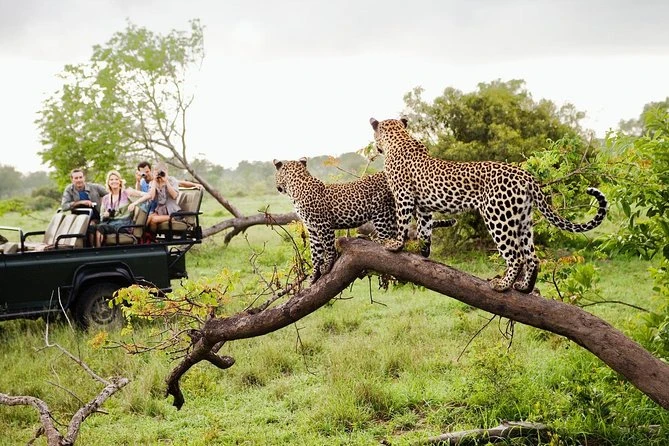The Yala National Park is the pride of animal protection in Sri Lanka; a highlight that a visitor in the country will never want to miss because a visit to the park provides the unsurpassed safari in one of the most bio-diverse systems of wildlife in all of Asia. Situated in the southeast corner of Sri Lanka, this fabulous wilderness reserve (area 979 sq pillar) has got itself the image of one of the leading leopard observers in the world.
What Makes Yala National Park Special?
The Yala national park is also famed to be the only place in the world with the largest density of leopards and hence a definite visit among the wildlife lovers and photographers. The park is the habitat of the Sri Lankan scale and undefined predator Panthera pardus kotiya, a splendid sub-species exclusive on earth.
World-Class animal concentration
In Block I of the park alone the density of the leopard is amazing with a range at one leopard per square kilometer and it also has around 25 leopards within this block alone. This great density has made Yala one of the best destinations in the entire world to monitor these elusive big cats in the wild.
Wildlife Highlights: What Animals Can You See?
The Big Five of Yala
1. Sri Lankan Leopards
- Endemic subspecies unique to Sri Lanka
- Highest density population globally
- Best viewing opportunities during early morning and evening safaris
- Estimated 25 leopards in Block I alone
2. Asian Elephants
- Resident herd of 300-350 individuals
- Frequently spotted at waterholes and open grasslands
- Peak viewing during dry season when they congregate near water sources
3. Sri Lankan Sloth Bears
- Endangered species with healthy population in Yala
- Best spotted during Palu season when feeding on ironwood tree berries
- Distinctive shaggy black coat and long claws
4. Wild Water Buffalo
- Indigenous to Sri Lanka but now rare
- Impressive sight in marshy areas and near lagoons
- One of the park's most threatened large mammals
5. Spotted Deer
- Abundant throughout the park
- Primary prey species for leopards
- Beautiful spotted coat pattern
Bird Watching Paradise
The Yala national park boasts of more than 215 species of birds and hence it is one of the best birding destinations located in Sri Lanka. Good species are:
- Peacock and peacock hens
- Painted storks
- Pelicans
- Eagles and hawks
- Different endemic species unique in Sri Lanka
Additional Special Animals
- Water bodies and lagoons crocodiles
- Wild boar
- Jackals
- Several types of deers
- Monitor lizards
- Many species of butterflies and insects
Park Structure and Zones
There are five blocks as the Yala National Park is separated into five pieces, each providing different wildlife experiences:
Most Popular (Block I)
- Most leopards per square kilometer
- Optimal infrastructuring tourism
- Most traveled area and safari tracks in place
Palatupana entrance gate - Block II
- Similar vegetation of Block I
- An alternative that is not crowded
- Nice wildlife watching activities
Blocks III, IV, V
- Increased forest shelves
- Undeveloped to tourism
- Excellent to the adventurous wildlife lovers
- New ecosystem and new species
Best Time to Visit Yala National Park
Optimal Safari Season: February to June
February to June is the best time of viewing wildlife in the Yala national park, and no doubt, the best time of the year. It was at this time:
- Waterholes are areas where animals gather Animals harass waterholes
- There is less vegetation offering better visibility
- It has good weather conditions when it comes to doing safaris
- Most likely chance of leopard sightings
- Seasonal Considerations
Dry Season (February June)
- Best viewing time of animals
- Fine weathers and little precipitation
- Peak season entrance fee this will increase fees paid at the entrance point
- We should book in advance
Wet Season (October - January)
- Green sceneries
- Less crowds
- Part of it can be unexplored
- Sometime park is shut during monsoons
Shoulder Season (September -July)
- Pleasant masses and reasonable prices
- Denny wildlife viewing
- Rainfall state of occasional skies
- Nice climates
Safari Options and Experiences
Morning Safaris (6:00 AM - 12:00 PM)
- Best for leopard sightings
- Active wildlife during cooler hours
- Excellent photography lighting
- 6-hour duration
Evening Safaris (2:00 PM - 6:00 PM)
- Perfect for bird watching
- Beautiful sunset photography
- Animals becoming active after afternoon rest
- 4-hour duration
Full Day Safaris
- Maximum wildlife exposure
- Lunch break outside the park
- Comprehensive park exploration
- 10+ hours total experience
Entrance Fees and Practical Information
Current Pricing (2025)
Foreign Visitors:
- Adults: USD 31-36 per person (depending on group size)
- Children: Reduced rates available
- Payment accepted in Sri Lankan Rupees (LKR) only at entrance gates
Safari Costs:
- Private jeep tours: Average USD 65 per person
- Group tours: More economical option
- Professional guide services included
Park Entrances
1. Palatupana Entrance (Main)
- Most popular and busiest entrance
- Best facilities and infrastructure
- Located near Tissamaharama town
- Can experience long queues during peak season
2. Katagamuwa Entrance
- Quieter alternative entrance
- Near Kataragama town
- Less crowded, shorter waiting times
- Good accommodation options nearby
3. Galge Entrance
- Least crowded entrance
- More remote location
- Ideal for those seeking solitude
Accommodation Options Near Yala
Luxury Safari Lodges
- Jetwing Yala
- Cinnamon Wild Yala
- Chena Huts by Uga Escapes
- Leopard Trails Safari Lodge
Mid-Range Hotels
- Elephant Reach Yala
- Yala Safari Hotel
- Big Game Camp Yala
Budget Accommodations
- Guesthouses in Tissamaharama
- Camping options (with permits)
- Backpacker hostels
Getting to Yala National Park
By Road
- 300 km from Colombo (6-7 hours drive)
- 200 km from Kandy (4-5 hours)
- 90 km from Galle (2-3 hours)
- Well-maintained roads with regular bus services
Nearest Airport
- Mattala Rajapaksa International Airport (35 km)
- Bandaranaike International Airport, Colombo (300 km)
Public Transportation
- Regular bus services to Tissamaharama
- Train connections to nearby stations
- Local taxi services available
Cultural and Historical Significance
Ancient Heritage
The Yala National Park is not only about animals but it has cultural heritage. The park has various other significant archaeological sites:-
Sithulpawwa Monastery
- Early Buddhist monastery 1
- It once had a population of 12000 people
- Lasting pilgrimage destination
- Caves of rocks with ancient writings
Magul Maha Viharaya
- Historical ruins of the Buddhist temples
- Archeological importance
- Local value to cultures
Conservation Efforts and Challenges
Wildlife Protection Initiatives
- Anti-poaching programs
- Habitat restoration projects
- Community-based conservation
- Research and monitoring programs
Environmental Challenges
- Human-wildlife conflict
- Climate change impacts
- Tourism pressure management
- Habitat fragmentation concerns
Photography Tips for Yala Safari
Best Photography Conditions
- Golden hour lighting (early morning/late afternoon)
- Telephoto lenses essential for wildlife
- Silent shutter modes recommended
- Respect minimum distance regulations
Equipment Recommendations
- DSLR or mirrorless camera
- 200-600mm telephoto lens
- Extra batteries and memory cards
- Dust protection for equipment
Safari Etiquette and Guidelines
Responsible Wildlife Viewing
- Maintain safe distances from animals
- No loud noises or sudden movements
- Follow guide instructions strictly
- Stay inside vehicles at all times
Environmental Responsibility
- No littering in the park
- Respect wildlife habitats
- Support local conservation efforts
- Choose eco-friendly accommodation
Planning Your Yala Safari Adventure
Pre-Visit Preparation
- Book accommodation well in advance
- Confirm safari timings and entrance fees
- Pack appropriate clothing and sun protection
- Bring sufficient cash in Sri Lankan Rupees
- Prepare camera equipment and spare batteries
What to Pack
- Comfortable safari clothing (neutral colors)
- Hat and sunglasses for sun protection
- Binoculars for wildlife viewing
- Insect repellent
- Personal water bottle
- First aid kit
Health and Safety Considerations
- Vaccinations: No special requirements
- Malaria risk: Low, but precautions recommended
- Sun protection: Essential due to strong tropical sun
- Emergency medical facilities available in nearby towns
Beyond Yala: Nearby Attractions
Kataragama Temple
- Important multi-religious pilgrimage site
- 15 km from park entrance
- Cultural significance for multiple faiths
Bundala National Park
- UNESCO Biosphere Reserve
- Excellent for bird watching
- Complementary wildlife experience
Kirinda Beach
- Pristine coastal area
- Historical significance
- Relaxation after safari adventures
Conclusion: Why Yala National Park Should Be on Your Bucket List
Yala National Park is the best example in the wildlife safeguarding history in Sri Lanka; since it provides the tourists with the best chance to see some of the most splendid animals in their homes. Having the highest density of leopards in the world the variety of ecosystems which leads to more than 44 species of mammals, 215 species of birds and other diversity in the cultural aspect which stretches over thousands of years, Yala offers the full package of nature and culture.
If you are a wildlife photographer wanting to get the best shot of a leopard or a nature lover who just wants to go to diversified ecologies or a culture explorer who would like to explore ancient civilizations Yala National Park can offer you a memorable experience to remember in a lifetime.
Not only does this park take conservation seriously, their experience at safaris is the best in the world and they are close to the other attractions on the island of Sri Lanka making the park an absolute must visit attraction to anyone who tours the island. Come and experience the adventures of your Yala safari by booking it now and be ready to get blown by the rough majesty of beauty and biodiversity that has made this park one of the most acclaimed wildlife attractions in Asia.
Are you ready to visit the Yala National Park?
It is recommended to visit at the best season between February and June when there is maximum wildlife sightings. Reserve your cabin early, particularly whenever it is high season and be ready to have an adventure that is going to move your definition of the success of wildlife conservation in Sri Lanka.
Keywords: Safari Yala National Park, Sri Lanka, watching leopard, photography wild life, Asian elephants, sloth bears, Yala National Park safari tours, Block I Yala, Tissamaharama, Sri Lanka wild life conservation, Sri Lankan leopard, Sri Lanka national parks


